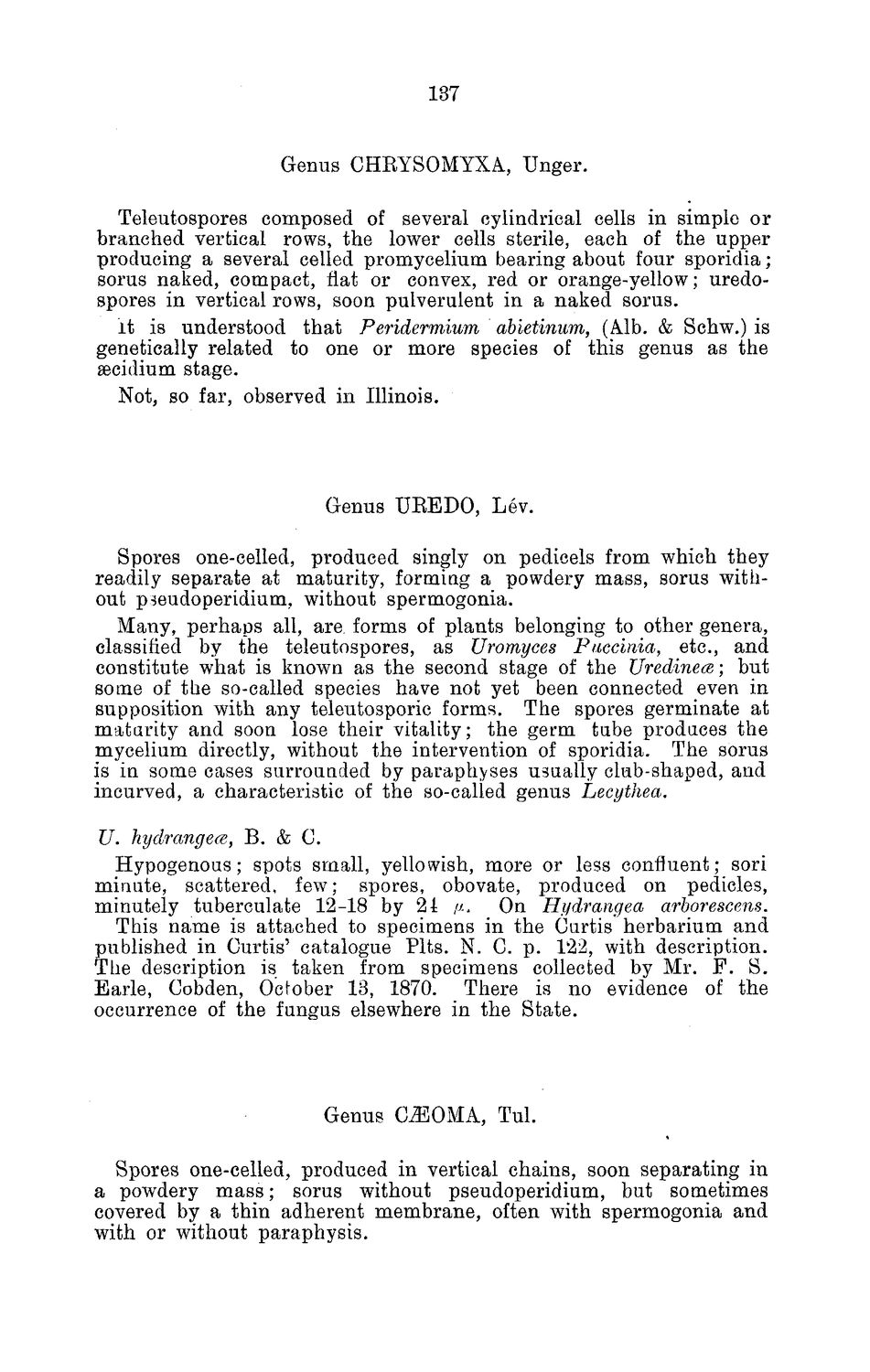| |
| |
Caption: Board of Trustees Minutes - 1884
This is a reduced-resolution page image for fast online browsing.

EXTRACTED TEXT FROM PAGE:
137 Genus CHBYSOMYXA, Unger. Teleutospores composed of several cylindrical cells in simple or branched vertical rows, the lower cells sterile, each of the upper producing a several celled promycelium bearing about four sporidia ; sorus naked, compact, flat or convex, red or orange-yellow; uredospores in vertical rows, soon pulverulent in a naked sorus. it is understood that Peridermium abietinum, (Mb. & Schw.) is genetically related to one or more species of this genus as the aecidium stage. Not, so far, observed in Illinois. Genus UBEDO, Lev. Spores one-celled, produced singly on pedicels from which they readily separate at maturity, forming a powdery mass, sorus without pseudoperidium, without spermogonia. Many, perhaps all, are forms of plants belonging to other genera, classified by the teleutospores, as Uromyces Puccinia, etc., and constitute what is known as the second stage of the Uredinece; but some of the so-called species have not yet been connected even in supposition with any teleutosporic forms. The spores germinate at maturity and soon lose their vitality; the germ tube produces the mycelium directly, without the intervention of sporidia. The sorus is in some cases surrounded by paraphyses usually club-shaped, and incurved, a characteristic of the so-called genus Lecythea. U. hydrangea, B. & C. Hypogenous; spots small, yellowish, more or less confluent; sori minute, scattered, few; spores, obovate, produced on pedicles, minutely tuberculate 12-18 by 24 /x. On Hydrangea arborescens. This name is attached to specimens in the Curtis herbarium and published in Curtis' catalogue Pits. N. C. p. 122, with description. The description is taken from specimens collected by Mr. F . S. Earle, Cobden, October 13, 1870. There is no evidence of the occurrence of the fungus elsewhere in the State. Genus GEOMA, Tul. Spores one-celled, produced in vertical chains, soon separating in a powdery m a s s ; sorus without pseudoperidium, but sometimes covered by a thin adherent membrane, often with spermogonia and with or without paraphysis.
| |